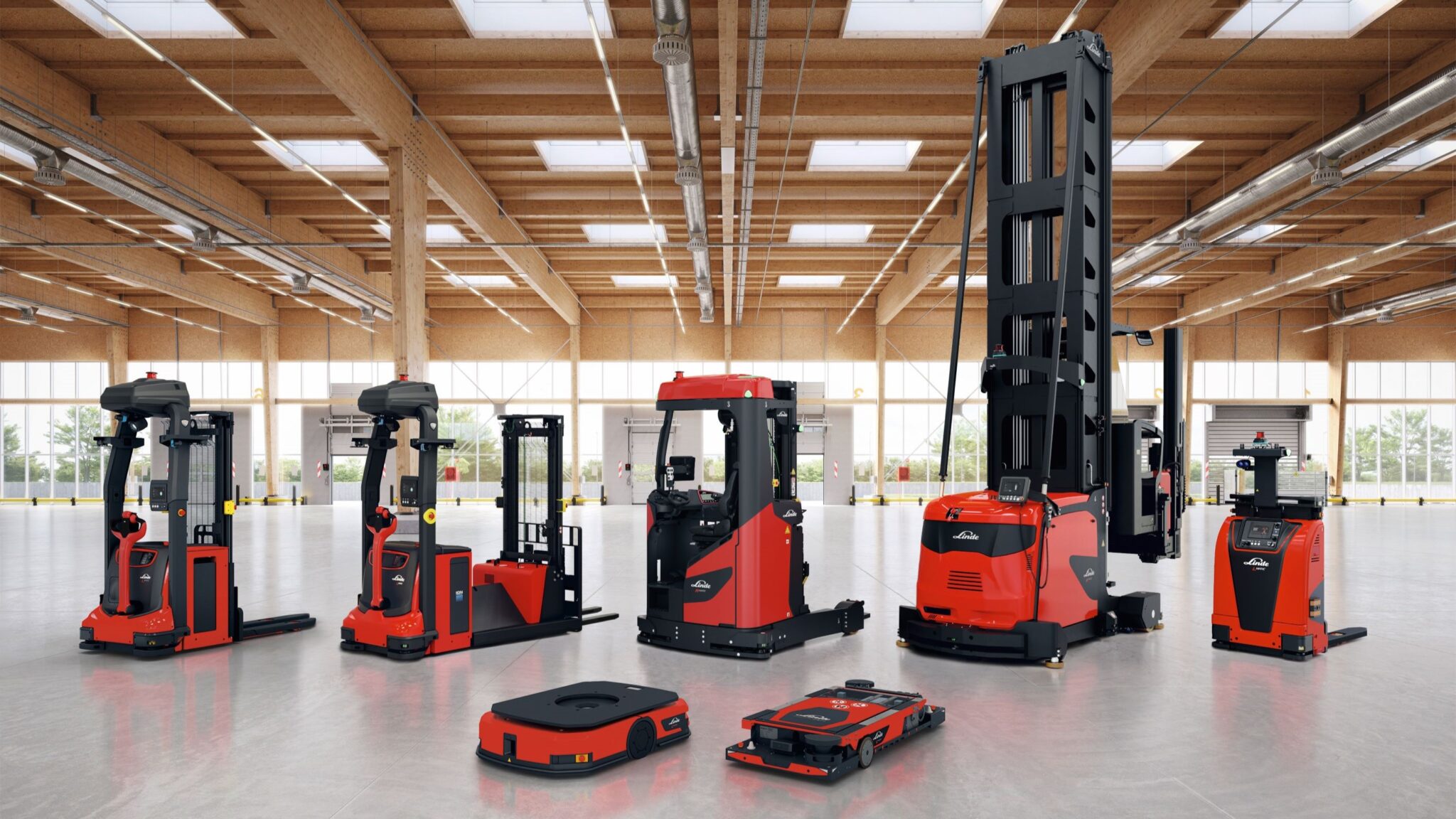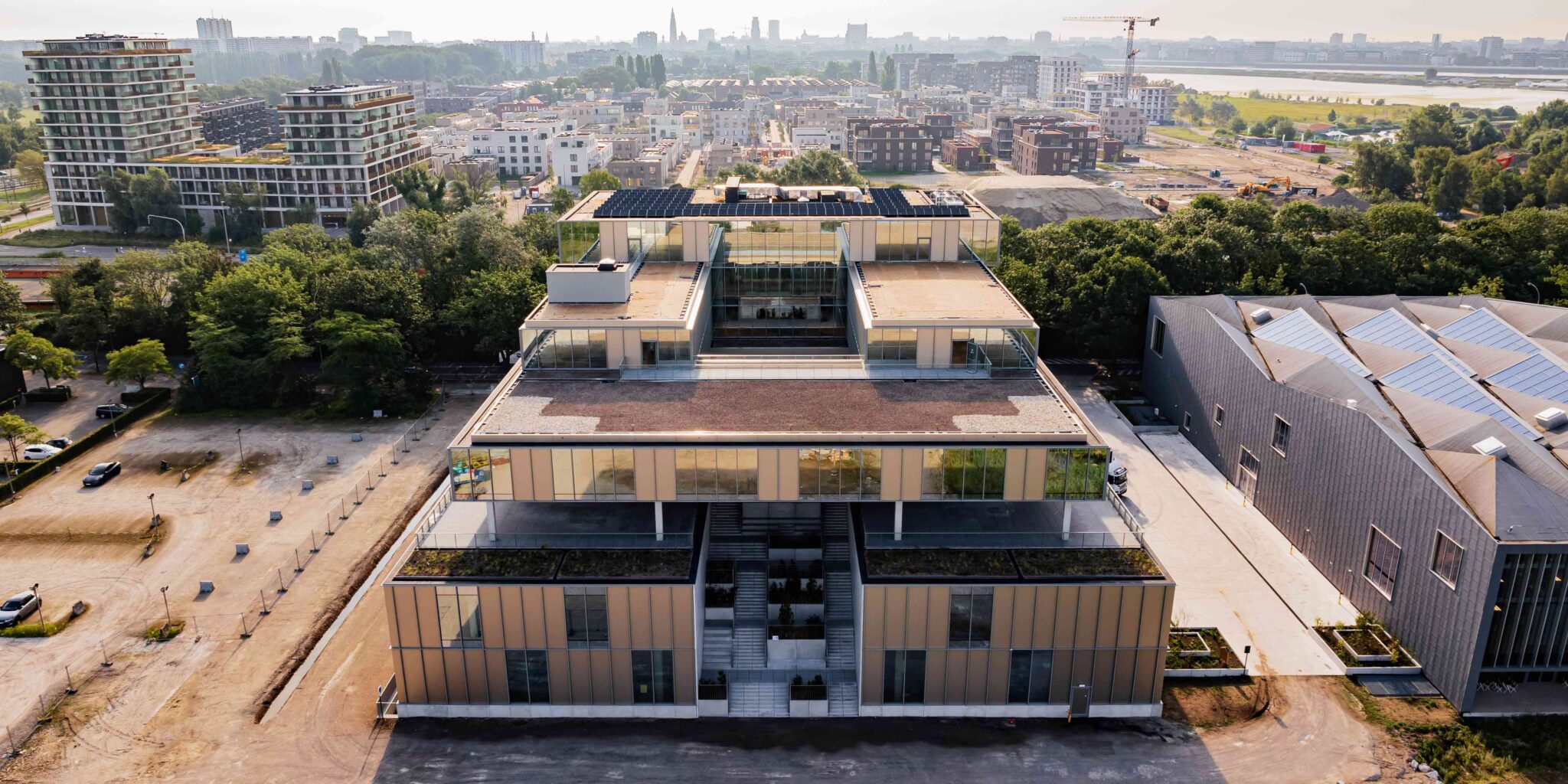Intralogistics specialist Linde Material Handling (MH) has expanded its range of automated forklift and industrial trucks, thus completing its updated product portfolio. A standout addition to the lineup is the automated Linde K MATIC k VNA turret truck.
“If customers are storing and retrieving exclusively full pallets in high-bay racking, this forklift eliminates the need for them to purchase a manually operated truck,” explains Pascal Kuster, Sales Trainer Automated Guided Vehicles at Linde MH. Other vehicles set to launch include the Linde R-MATIC k reach truck and the Linde L MATIC AC k counterbalanced pallet stacker with cantilevered forks. These series production models are designed to maximize the benefits of automation projects implemented with Linde MH, reducing planning and implementation times while ensuring greater efficiency and lower costs.
“With the new models, the already launched automated Linde L-MATIC HD k pallet stacker, and the fully automated compact Linde L-MATIC core variant, we can automate our customers’ material flow processes more easily and cost-effectively, while also making them more service-friendly and flexible for expansion,” says Kuster. The ‘toolbox’ that Linde MH’s automation planners use to develop these concepts includes high-quality, energy-efficient and easy-to-program AGVs and AMRs. “Our new vehicles play a key role in our automation solutions. However, good project planning and preparation are just as crucial to success,” Kuster emphasizes. “After all, our customers are investing in a solution, rather than just a product.” The standardization of processes is an essential prerequisite for any automation project. In this context, it’s important to note that processes with manual trucks cannot always be replicated one-to-one with the corresponding automated vehicle models. For example: If a reach truck operator was previously also responsible for transporting goods from the receiving area to the high-bay racking, in the automated system using an automated pallet stacker for this subprocess may be more efficient in order to increase throughput and optimize pallet-handling costs per hour.
A new generation of vehicles for efficient automation
The larger the product portfolio, the more options arise for developing automation solutions that are precisely tailored to customers’ specific needs. Linde MH capitalizes on this by offering the industry’s most comprehensive range of vehicles. The Linde K-MATIC k stands out in the premier league of warehouse technology. With a load capacity of 1.5 tons and a maximum lift height of 14.5 meters, this very narrow aisle (VNA) truck is designed to optimize warehouse capacity usage. “Since the truck primarily operates in rack aisles, using an automated vehicle is a sensible choice,” explains product trainer Kuster. “This allows employees to focus on higher value-added activities.”
The Linde R-MATIC k reach truck is ideal for automated replenishment in wide-aisle warehouse sections. Three models are available, with load capacities of up to 2.3 tons. To optimally customize the trucks for individual needs, they can be equipped with a wide selection of modular mast variants, offering maximum lift heights of up to 10 meters. Automated shuttle and storage solutions round off the extended range of vehicles.
Innovative technology boosts productivity
Both VNA trucks and reach trucks use state-of-the-art reflector technology for navigation. They feature a sensor-based pallet positioning system with “intelligent” forks for precisely storing and retrieving qualified load carriers such as Euro pallets, mesh boxes and CHEP pallets. The system not only detects whether a rack location is empty but also identifies any obstacles in the way. If pallets are not correctly aligned, the forks adjust accordingly. Furthermore, the system ensures that the goods are precisely positioned in the rack before the forks withdraw from the load carrier. The trucks are powered by either lead-acid batteries or the latest generation of lithium-ion batteries for maximum energy efficiency. Both battery types can be combined with all available manual or automatic charging options. A clear, colored touchscreen simplifies human-machine communication and makes entering control commands easier. Numerous standard features such as 360° scanners, emergency stop switches, lights and acoustic signals ensure maximum operational safety. Optional functions are available to supplement these features, including 2D curtain lasers and other lighting solutions such as BlueSpot and Red Warning Lines.
Integrated software platform MATIC:move
All new vehicles have been developed in-house and are designed to map key intralogistics processes end-to-end. VNA trucks and reach trucks are digitally networked with the pallet stacker variants. Automated trucks are controlled via the Linde MATIC:move (or MATIC:move+) software platform’s uniform user interface, which allows for real-time monitoring, display of open orders, predictive maintenance and standardized connection to WMS and ERP systems. Additionally, the Linde Warehouse Manager facilitates the networking of automated and manual vehicles and their integration into operational safety assistance systems such as the Linde Safety Guard. “However, cooperation with our customers is a key factor for success,” emphasizes Kuster. “We provide comprehensive support to decision-makers throughout the entire process, from the conceptualization phase through implementation. We assist in standardizing processes, defining key performance indicators and simulating material flow with the help of our digital twin. This approach ensures a solid foundation for successful project completion and a swift return on investment. And after commissioning, our experienced service technicians and the high density of our sales and service network ensure that customers can rely on fast response times for maintenance and repairs.”
similar news





![[Podcast] Safety First: How to ensure Safety in Intralogistics](https://9e1ed6cd27b6b3199380.b-cdn.net/wp-content/uploads/2025/07/Design-9-4-1.png)












